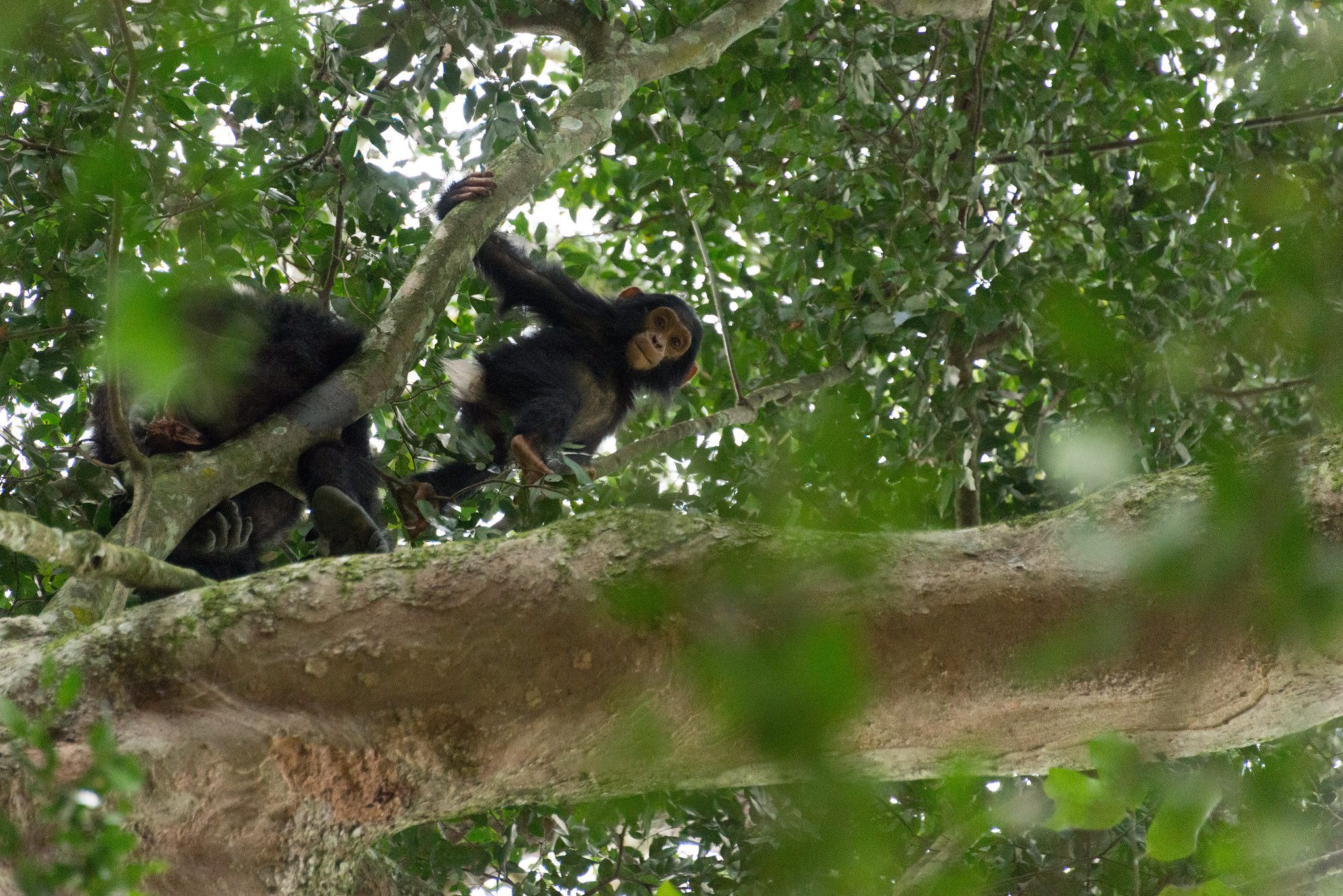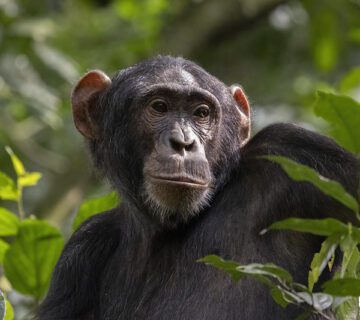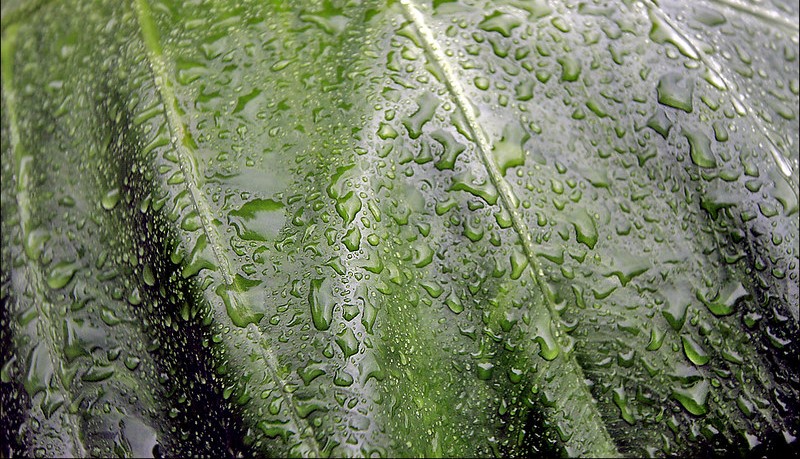Queen Elizabeth National Park‘s Kyambura Gorge is an underground tropical forest. The Gorge is roughly 1 km long and 100 metres deep. It is an extension of the Queen Elizabeth National Park‘s Kyambura Game Reserve. The Kyambura Gorge is characterised by a lush tropical rain forest, which is home to many birds, monkeys, and animals like elephants and hippopotamus. The Gorge is surrounded on all sides by huge summer meadows, while human crops and communities are not far away.
The surrounding Savannah receives a lot of sunlight, whereas the gorge itself stays quite cool due to the towering trees that block out direct sunlight. The River Kyambura is an important water supply that flows directly through the heart of the forest, providing water to plants and animals all year. During the rainy season, the river Kyambura receives the majority of its water from the rocks around the gorge.
Through a huge swamp or wetland, Kyambura Gorge leads to the Kazinga channel in Queen Elizabeth National Park. According to local tradition, there were once significant rains in the region that generated large floods that carried away several people and their property. People went out to hunt for lost loved ones and property once the rains stopped and the floods receded, but they were unsuccessful. Everyone returned wailing and used the phrase “Kyambura,” which means “lost” or “couldn’t find it.” Because of the widespread destruction of property and the disappearance of people, the area and gorge became known as Kyambura.
How did the Kyambura Gorge come to be?
Scientists have proposed suggestions to explain how this amazing natural feature came to be. One school of thought holds that the gorge was produced by constant erosion caused by the power of the Kyambura River. According to this school of thought, the river that went down the gorge was originally enormous and swift, leaving a valley once the waters receded.
A more plausible idea links the development of the gorge to the formation of the East African Rift Valley. The East African Rift Valley originated when compression forces induced stress on the earth’s crust, lifting certain areas of the earth and forming a large valley in the process. Later, secondary faulting occurred on the East African Rift Valley’s very floor. Other valleys, such as the Kyambura Gorge, were formed as a result of secondary faulting.
The Kyambura Gorge is known as the “Valley of Apes” because of the tiny group of chimpanzees and other smaller monkeys that live there. The chimpanzee population at Kyambura Gorge is habituated, making it the only area in Queen Elizabeth National Park where tourists may monitor the primates.
Kyambura Gorge Attractions
Chimpanzee surveillance
Chimpanzee tracking is undoubtedly the most appealing activity in Kyambura Gorge. They are man’s closest cousins and are far more clever than most primates. They can walk on two legs, but only for short distances since they prefer to utilise all four limbs. Chimpanzees live in groups of 30 to 80 individuals. Large groups are split into smaller groups that eat individually before returning to the larger group before nightfall.
In the afternoon and at night, they make nests on the tops of trees to rest. The nests are quickly constructed by bending numerous tree branches together to make a cosy chimp couch. Chimps spend most of their time outside of their makeshift nests in the morning. They begin by picking up fruit at random in the morning and gradually become more choosy as they become fuller in the afternoon. Chimps will use stems to combat opponents, even people, due to their great intellect. The same stems may be used to extract/lure termites from their burrows.
Despite the fact that chimps eat mostly fruits, they will kill tiny antelopes and other primates for sustenance. The hunt is organised in groups, and the unfortunate victim is pursued, corned, and eaten.
Viewing primates and other creatures
Apart from chimpanzees, baboons, vervet monkeys, red-tailed monkeys, and Colobus monkeys may be seen at Kyambura Gorge. From the gorge or while still on the Savannah, you may view monkeys and birds eating down the valley. The view from the surrounding Savannah is breathtaking. Instead of descending down the valley, tourists can just walk along the gorge’s walls to see the view below. Expect to see various woodland wildlife, including hippos, antelopes, and elephants, if you opt to proceed down the valley. Lions, hyenas, buffaloes, leopards, and other species also frequent the gorge.
Forest and nature walks
The Kyambura Gorge is a fantastic spot to explore. When visiting Queen Elizabeth National Park, many visitors focus on the Savannah and the wildlife. They have no idea they are overlooking nature’s grand miracle at work. Aside from its natural beauty, you have the impression that you are in another universe, somewhere fascinating and intriguing. Guided nature hikes can be combined with chimp tracking or done separately on foot to witness forest wildlife such as big forest hogs, Colobus monkeys, red-tailed monkeys, and hippos.
Nature hikes in Kyambura Wildlife Reserve can transport you to another universe. The sweltering Savannah that surrounds the canyon gives way to a cool subterranean jungle with gorgeous tree canopies and interesting wildlife. Your Guide will tell you all about the valley, including its history, fauna, and birds. The nature walks are scheduled in two shifts: morning and afternoon. Early morning nature walks begin at 8:00 a.m., and afternoon hikes begin at 1:00 p.m., both from the fig tree camp. During each session, only two groups can participate in the nature walks. Each group usually consists of four people.
Observation of birds
The Kyambura Gorge is a birdwatcher’s heaven. Because of the thick trees and beautiful surroundings, birds flock to the gorge. The trees are abundant in fruits and insects, which the birds enjoy. Many of the birds live in the forest, but there are also innumerable birds that come to the gorge to feed and then return to their nests in the Savannah or marshes around Lake Albert and George. The common species include the African broad bill, Martial Eagles, falcons, African finfoot, Verreaux’s Eagle Owl, African skimmers, White-tailed Lark, Bar-tailed Godwit, black-headed bee-eaters, Pink-backed Pelican, Shoebill storks, Corncrake, papyrus canary, Chapin’s Flycatcher, papyrus gonolek, Black-rumped Buttonquail, white-winged warbler and flamingos.
How to Get to Kyambura Gorge
The Gorge is approximately 420 km from Kampala via Mbarara town. The distance is 410 km if you take the Kampala Fort Portal route. Driving to Queen Elizabeth National Park by car takes around 6 hours. To bypass the long drive, guests can hire a chartered flight from Entebbe International Airport to the Mweya airstrip. The flight lasts around an hour. A private car from the airfield to the visitors centre in Mweya can be provided by your travel organisation or hotel. After purchasing your tickets in Mweya, you will be transported to Kyambura Gorge. The Kyambura Gorge is 30 km from the Mweya Visitors Centre. The Kyambura Gorge has its own tiny Visitors Centre at Fig Tree Camp, which is located just outside the Gorge.



